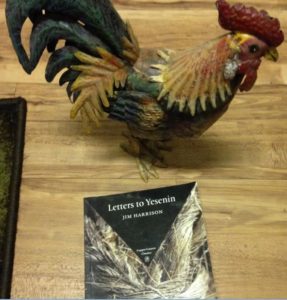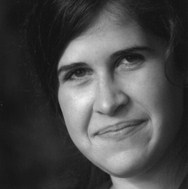 The publishing vultures (or more likely turkey buzzards) are circling my apartment balcony, but why begin in such a sour mood? A mild, morning hangover, not so unlike the lingering ribbons of a common cold/sneeze (at least to my thinking), yet the coffee is hot and science has proven many, many cups of caffeine won’t actually kill you. Thank you, science, you national mutt/political football/current turd. But there goes a cloud in shape of portobello, a puffy suitcase or two, shreds of cotton…Then jump-cut, an actual squadron of honking Canada Geese, a lost and demented species, seemingly as comfortable in a Walmart parking lot (probably eating Cheetos) as in a glittering city pond or even a natural lowland marsh. Look, there goes one smoking a cigarette while perched atop a city bus. I wave, no response from the goose. Most likely they are human.
The publishing vultures (or more likely turkey buzzards) are circling my apartment balcony, but why begin in such a sour mood? A mild, morning hangover, not so unlike the lingering ribbons of a common cold/sneeze (at least to my thinking), yet the coffee is hot and science has proven many, many cups of caffeine won’t actually kill you. Thank you, science, you national mutt/political football/current turd. But there goes a cloud in shape of portobello, a puffy suitcase or two, shreds of cotton…Then jump-cut, an actual squadron of honking Canada Geese, a lost and demented species, seemingly as comfortable in a Walmart parking lot (probably eating Cheetos) as in a glittering city pond or even a natural lowland marsh. Look, there goes one smoking a cigarette while perched atop a city bus. I wave, no response from the goose. Most likely they are human.
Two books arrive (people send me books constantly, a sweet curse) like roadkill in the mail, pungent but a bit vulgar: A Really Big Lunch: Meditations on Food and Life from the Roving Gourmand and Just Before Dark, Collected Nonfiction, both written by literary crow/mountain lion, Jim Harrison. Harrison died in the spring of 2016. Oh look, the spring of 2017 and two brand new publications. Editors of the post mortem. Ink stained vultures, New York hyenas, etcetera. So let’s not read them at all.
Instead, let’s discuss what I term, literary homage. An aside? No. Bear with me; just come along for a short yet hopefully fruitful ride through literary time and space. Consider this a metaphysical self-driving car, or maybe a horse (actually the first self-driving car, no?).
In 1925 Russian poet Sergei Yesenin is found dead at age 30, hanging by braided rope from a pipe in his hotel room. I purposely structured the sentence in this manner, hanging by braided rope. Was it a suicide? Who knows? Yesenin had recently pissed off the soviets in several ways (the details not so relevant here), and it’s very possible the government “silenced” him (much in the way a modern day critic of Vladimir Putin may awake one morning in London to a teacup of sugar and polonium-210). Yesenin’s final poem was found on a nearby desk, and written in his own blood:
Goodbye, my friend, goodbye
My love, you are in my heart.
It was preordained we should part
And be reunited by and by.Goodbye: no handshake to endure.
Let’s have no sadness — furrowed brow.
There’s nothing new in dying now
Though living is no newer.
Let’s move to 1972 (as I mentioned, extra-stellar travel), to American writer, Jim Harrison, at age 35. He has a wife and a daughter and a literary career sinking into the mosquito bogs and chokeberry thickets outside his Upper Peninsula Michigan cabin. His poems and novellas are not finding publication (they will later; including Legends of the Fall). He’s broke and depressed. He’s drinking too much. But also obsessed with literature, currently of the Russian variety—Yesenin. So begins a correspondence in lyrical, confessional verse. Letters to Yesenin, notes to the dead poet, questions about poetry and depression and suicide and life…these missives published in 1973 by Sumac Press and republished by Copper Canyon Press in 2007 and still in print (like all of Harrison’s books, before and after Yesenin).
Time and Space, Space and Time—now to 2006. Return to Michigan, Grand Rapids…a southern boy stands shivering on a bridge above the Grand River. What are these frosty humpbacked boulders below, these jagged cracked platters of ice…these copper steelhead shards holding in the current, occasional smudge of trout? This alien confetti snow now swirling down about his red nose? Where is his family? His friends? Solitary meals in low-slung bars. Drinking silty beer (Michigan is truly a land of serious beers). Studio apartment the size of a van, more an aquarium, fourteen windows, some sort of exhibition case in some rarely visited museum…cracks in the panes. I am lost and in Michigan and teaching at Grand Valley University and stumbling upon extinguished night seas of an odd city and slippery ice and cobblestoned mind, I mean to say the moon, dark side…but one lonely evening I walked down the hill and into the city library and Jim Harrison discovered me in my illness and gave me courage to move forward, yes, to survive.
Spring, 2016: Jim Harrison suffers a fatal cardiac arrest. His body found in his Arizona home, on the Navajo rug below his desk. He died while writing a poem (this sounds apocryphal, but fact-checked). Harrison’s death affected me greatly, more than I would have thought or believed. And my response was to write him letters, in the spirit of his transmissions to Sergei Yesenin. Time and Space…they began with just one, a sort of goodbye. And thank you. Then another and another and today I continue writing in this literary respect:
Example here.
And here.
And here.
I will assume most readers of this site are writers or dancers or artists of some questionable shade/hue. Here is a concept that may excite you, or lead you to your next endeavor, or simply an idea to ponder, your own passing cloud to name and shape. Literary Homage.
- First, select your artist. The one you mind-meld with; your totem, your token, your one-of-a-kind coffee mug, your favorite beer. Boom-boom! Thrill! Sex, love, religion, or death. Crushed Dexedrine or cute puppy or fast car or that time you made out with a Goth kid in the funhouse at the state fair. The one that made your heart pound, feet float down the golden boulevard, Kafka’s axes for the frozen sea within us, etcetera.
- Read hard and vividly. Read seriously your artist. Over and again. I’ve read Letters to Yesenin maybe 50 times (and counting). Then dove into Harrison’s Selected and New Poems and The Shape of the Journey, the many novellas (that cad, Brown Dog), Sundog and Dalva and Farmer and Wolf, Harrison’s memoir, and his excellent book of food writing, The Raw and the Cooked.
- Can you take it further? Yes, you probably can. Interviews, obituaries, various studies and source material. Letters. For me, I’m on leave from my job in the fall and will be repeatedly visiting (once again) Grand Rapids, Michigan, to dive deep into the Jim Harrison archives. You’re doing this sort of research correctly once the artist haunts your tangled dreams.
- Another level? Personally, once I decided this would be an entire literary homage undertaking, I knew at once it would be essential to immerse (I know “immersion” is hyperbolic, but it’s the best word I can find) myself within the very life of Harrison. I suggest you do the same with your particular author. If selecting Simone de Beauvoir, date a philosopher, smoke cloves, and join a clandestine Resistance. If Haruki Murakami, collect vinyl and run long distances while hoarding cats. If Ikkyu, visit local brothels in your Buddhist robes. And so on. For me, this was simple. Harrison was a devout daily walker; I’m a devout distance runner. I already hunt and fish. I can read a river eddy or a neap tide, can differentiate a pirouetting dove from a flushed quail. Yes, I can skin a buck and run a trot line, etcetera. As for sensuality, I avoid strip clubs (one of Harrison’s obsessions), but—like Harrison—if I am offered a sexual opportunity, I usually take it. Love of drink? I’m basically an alcoholic. Occasional soft drugs? Why not? One thing does elude me—Harrison was a true gourmand, while I usually eat nachos. So this took some adjustment. I increased greatly my input of garlic (and still do). I bought olive oil and wooden spoons. And to kick off the project, I ate a Harrison dinner, an ordeal that dealt with multiple shipped packages of frozen flora and fauna and definitely sent my bank account into the suck-hole, but these things we suffer for art. The dinner was oysters, snails, a braised lamb shank (on a bed of eggplant, green and red peppers, scallions, a pinch of lemon zest, and a couple heads of garlic), fresh pork sausage made by the local Mennonites, a venison round steak, two strawberry Pop-Tarts, salt-cod chowder with a wedge of cornbread, pea soup, five fried mourning dove, breaded asparagus, a plate of Greek olives and basket of onion rolls, Baked Lays potato chips, macaroni salad from the nearby deli, sliced apples, and two bottles of a pretty decent Cabernet (Oliver winery, right up the Indiana corn-lined road). Followed by a shot of white rum for grit and a sleeve of Girl Scout thin mint cookies. For Harrison, this would of course have been only a light lunch.
- Lastly, and the most important lesson for a writer during this literary homage is to understand form=function. My letters actually nod to Harrison’s technique, as Harrison’s own letters to Yesenin gave respect to that poet’s content and style. Letters to Yesenin are political (Yesenin writes about the soviets; Harrison rails against Nixon) and this gave me permission to write more about this country’s political climate, something I’d generally avoided. Harrison’s letters are chock full of literary references and so are mine, my brain being relatively well-read, since books are actually a necessary aspect of my job. Authors were weaved within. Finally, I noted Harrison’s wonderfully varied sentences, on a level I hadn’t seen since Annie Dillard. Harrison crafts sentences, prods them, twists and jerks them, smells and yells them, jolts them, songs them, unearths them…I tried to do the same.

I suppose that’s enough, a blog traditionally a flavor of compression/brevity. Initially planned on leading us through several examples of literary homage, from worthy Chinese poets (Tu Fu to Li Pai to Chu Shu-chen) to a lovely act of reverence by contemporary poet Bruce Smith to the epic (and epically attractive) Edna St Vincent Millay, who herself homages to Shakespeare… (I have a profound literary crush on Millay, if you didn’t know [and I don’t know why you would]). But way leads onto way, as Frost told us. At any rate, the NFL draft is tonight (upon this writing), a form of Christmas for any true fan. I have my plans. To sauté three cloves of minced garlic (slowly, slowly, let the herb express itself…), add black beans and rice, crumble in venison burger, and hit it all with Dave’s ghost pepper sauce. Skull-kicker, but in a good way. Serve with rotel dip (rotel and melted Velveeta) and tortilla chips. A shot of herradura and several bottles of Pacifico (one of Harrison’s favorite beers). Okay then. That should do.

